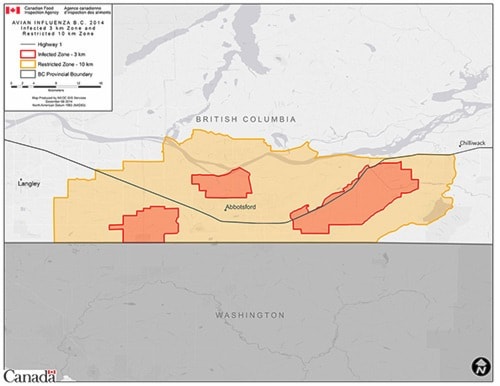While the source of the avian influenza virus that has infected several local farms still hasn’t been confirmed, local farmers believe wild birds are the most likely culprit, according to the president of the BC Chicken Growers’ Association (BCCGA).
On Monday, the Canadian Food Inspection Agency (CFIA) announced that an egg-laying operation in Langley had become the 10th farm to be affected by the outbreak of the “highly pathogenic” H5N2 virus. A total of 233,800 birds have now either died from the outbreak, or been ordered euthanized.
On Tuesday, officials in Washington State said avian influenza had been found in a pintail duck and a gyrfalcon in Whatcom county, which borders Canada.
BCCGA president Ravi Bathe, who runs a 90,000-bird broiler chicken operation in Abbotsford, said farmers have been doing their utmost to stop the virus from spreading.
“The farmers are doing everything they can and sometimes it’s out of their control,” he said Tuesday morning. “This is coming through the migratory bird population, we think, and what are you going to do? ... we need ventilation, we need air to get in the barns.”
In a report to the World Organization for Animal Health, the CFIA wrote: “the H5N2 virus detected in B.C. contains five of eight gene segments from highly pathogenic Eurasian H5N8 virus including the H5 gene and three of eight segments from typical North American viruses including the N2 gene (wild bird origin).”
Earlier in the week, in an email to the News, the CFIA said that the specific strain currently affecting Abbotsford farms has not been detected in wild birds in Canada, although surveillance and testing continues.
